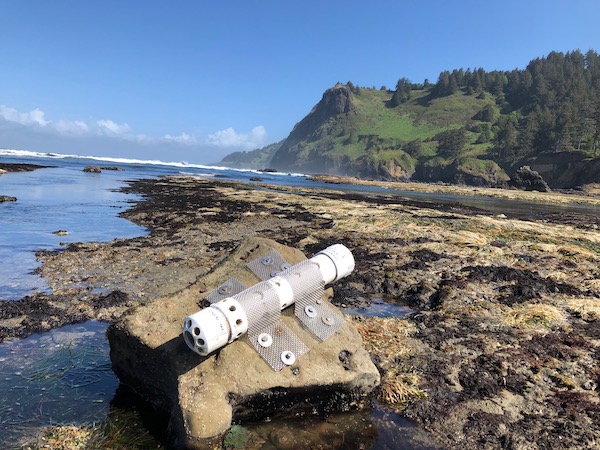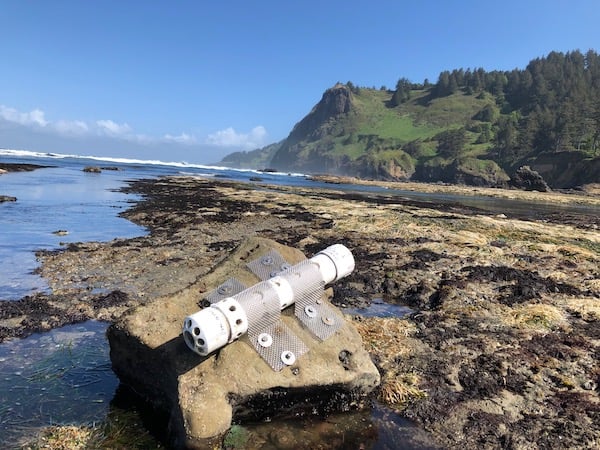
This week, Surfrider Foundation and other Oregon marine reserve partner groups up and down the coast installed water monitoring sensors to help scientists monitor and better understand ocean acidification and hypoxia in nearshore ocean waters. The effort is part of a unique community-science partnership with Oregon State University (OSU) and the Partnership for Interdisciplinary Studies of Coastal Oceans (PISCO), now in its 4th year of monitoring in Oregon's Marine Reserves and Protected Areas. Spearheaded by Dr. Francis Chan of OSU, the partnership with local community groups allows him not only to more efficiently and effectively monitor a larger geographic portion of the coast, but also to engage citizens in the science and inquiry process.
Most mornings start out with a cursory review of my email on my smarty-pants phone over coffee, but today was different - the scene was laid out as above. My job took me to Otter Rock Marine Reserve early to catch the low tide and play ocean acidification scientist. The sun was shining, the seals were flopping about and an array of shorebirds from oystercatchers to herons were foraging about the tidepools. After about a half mile trek down the beach and around the headland, I arrived at the rock that holds our anchors and bolts for the monitoring device (pictured below, installed). An hour later and some minor problem solving and a couple busted knuckles (as it tends to go in the field) - I had the unit installed for our 4th year monitoring the spring and summer season.
 Installed monitoring unit. The sensor is replaced monthly to download data
Installed monitoring unit. The sensor is replaced monthly to download data
Other marine reserve partner groups such as The Nature Conservancy and the Redfish Rocks Marine Reserve Community Team, also installed units at 3 other marine reserve sites from Port Orford on the South Coast up to Cape Falcon on the north coast. Dr. Chan is utilizing the units to understand how oxygen and pH behave in the nearshore, particularly within the rocky intertidal. "This is unprecedented monitoring for us in Oregon, since most ocean acidification and hypoxia monitoring we do is much further away from shore". Chan remarked that Oregon's Marine Reserves offer excellent monitoring opportunities that might help us find refuges and understand how ocean chemistry may vary in different parts of the ocean. "Ultimately this might help us understand how to adapt to changing ocean conditions and understand where there may be refuge opportunities for certain species.
Surfrider Foundation has been a key partner in Oregon not just with the monitoring efforts, but also with the interpretation and engagement with our members - and the public in understanding the science and opportunities to adapt to ocean acidification. We helped produce a great Oregon Ocean Acidification Story Website to educate on ocean acidification as well as house and interpret all of the monitoring data from the community science partnership. Check it out to learn more about the monitoring and check out the video above to learn more about how we're approaching solutions to these issues in Oregon.
